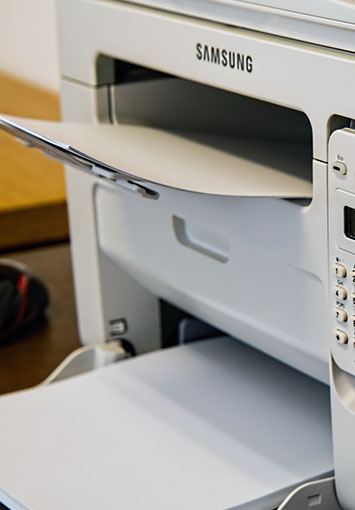Having access to important documents at all times and from any location is becoming more vital in today’s digital world. This has become considerably simpler with the ability to convert actual documents to PDFs. In this article will take a look at the benefits, convenience, and potential cost savings of converting physical documents to PDFs.
Advantages of Converting Physical Documents to PDFs
Increased accessibility
One of the main advantages of converting physical documents to PDFs is the increased accessibility it provides. PDFs can be accessed from anywhere in the world, as long as you have an internet connection. This means you can work on important documents while on the go without carrying around physical copies.
PDFs are accessible across various devices, including smartphones, tablets, laptops, and desktop computers. As a result, you can seamlessly transition between devices and work on your documents without any disruptions or inconveniences.
Improved document security
Another advantage of converting physical documents to PDFs is improved document security. PDFs can be password-protected, meaning only authorized individuals can access them. This is particularly important for confidential documents that contain sensitive information.
In addition, PDFs can be restricted to specific individuals, meaning that only those granted access can view and edit the document. This is useful when multiple people need to work on the same document, but only certain individuals can access specific sections.
Reduced physical storage space
Physical documents can take up a significant amount of space, which can be problematic for businesses that generate a large amount of paperwork. This is particularly true for legal and financial documents, which must be kept for several years.
Converting physical documents to PDFs can help reduce physical storage needs. PDFs take up much less space than physical documents and can be stored on a hard drive or in the cloud. This means that businesses can free up physical storage space and reduce the cost of storage.
The convenience of Converting Physical Documents to PDFs
PDFs are an excellent option for people as well as businesses because they are so easy to share. You can quickly send important files to clients, coworkers, or friends by emailing them in a PDF format. Additionally, PDFs are simple to share with multiple users, enabling you to work on a document with numerous users without worrying about version control.
Compatibility with various devices
You can view PDFs on a computer or a mobile device because they work with various devices. This is especially important for companies with staff who frequently travel or work remotely. Employees can work on important files anywhere, as PDFs can be viewed from anywhere.
Searchability
PDFs are searchable, which means that you can quickly find specific text within a document. This is particularly useful for businesses that generate a large amount of paperwork. Searching through physical documents can be time-consuming and inefficient, but with PDFs, you can quickly find the necessary information.
Cost Savings of Converting Physical Documents to PDFs
Reduced printing costs
Printing can be expensive, particularly for businesses that generate large amounts of paperwork. By converting physical documents to PDFs, businesses can reduce their printing needs. PDFs can be viewed on a screen, meaning there is no need to print the document unless it is absolutely necessary.
Reduced storage costs
Storage can be pricey, especially for companies that produce a lot of paperwork. Businesses can use less storage by turning physical documents into PDFs. Companies can free up physical storage space and save storage costs by using PDFs instead of actual papers, which take up far less space. Additionally, since cloud storage is sometimes less expensive than physical storage, storing PDFs on the cloud can help save resources on storage costs.
How to Convert Physical Documents to PDFs
There are numerous ways to convert physical documents to PDFs, and the process is very straightforward. One option is using an online PDF converter, like Lumin or Adobe Acrobat. You can upload a physical document and have these online tools convert it to a PDF format.
Another option is to convert the document to PDF using a program like Microsoft Word. Word processing applications like Google Docs and Microsoft Word frequently offer the ability to convert a document to PDF format. You can select the “Save As” option and the PDF format.
Finally, you can edit PDFs and convert them to other formats, such as editable Word documents, using PDF editors like Adobe Acrobat and Nitro Pro. This can be useful if you need to edit a PDF file or extract text from one.
In conclusion, converting paper documents to PDFs has many advantages, including better accessibility, higher document security, efficiency, and cost savings. Managing the conversion to digital documents is now easier than ever, thanks to the availability of online PDF converters, document-to-PDF converters, and PDF editors. Businesses and individuals can improve their overall efficiency by optimizing their workflow and using less physical storage space.
















